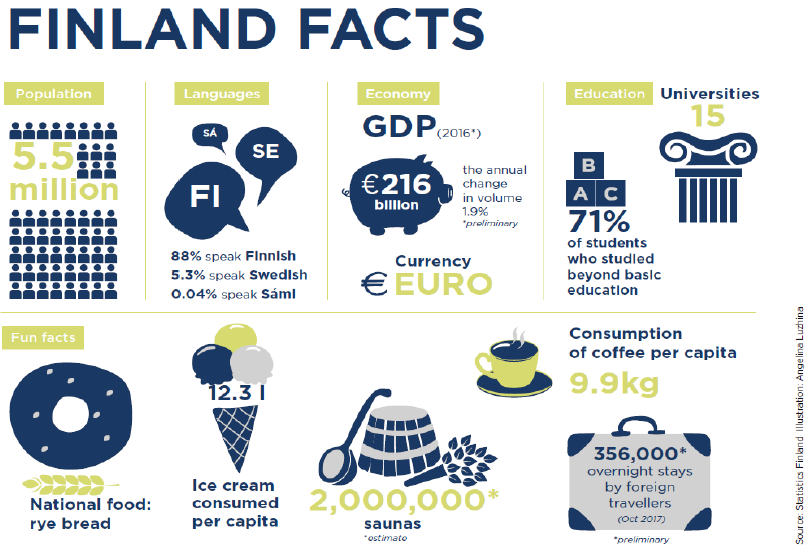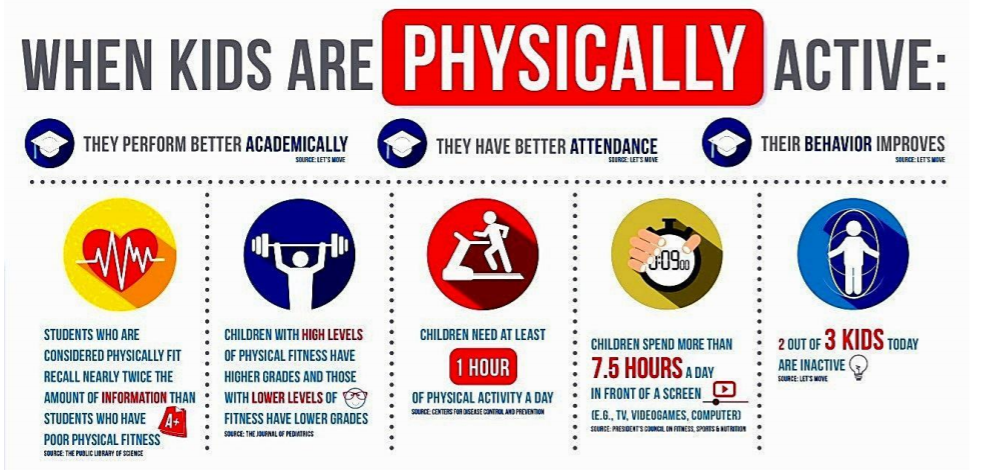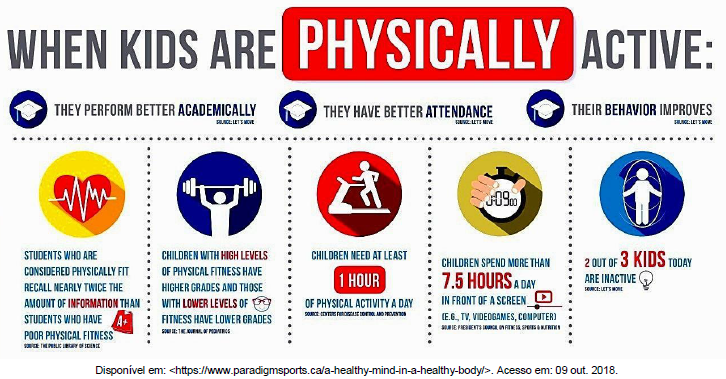Questões de Vestibular de Inglês - Interpretação de texto | Reading comprehension
Foram encontradas 4.863 questões

Disponível em: <http://www.bosch-presse.de/pressportal/de/en/see-boschs-contribution-to-industry-4-0-42895.html>. Acesso em: 23 fev. 2018. (Adaptado)
When California police officers approached a Tesla stopped in the centre of a five-lane highway outside San Francisco last week, they found a man asleep at the wheel. The driver, who was arrested on suspicion of drunk driving, told them his car was in “autopilot”, Tesla’s semi-autonomous driver assist system.
In a separate incident, firefighters in Culver City reported that a Tesla vehicle parked at the rear of their fire truck as it attended an accident on the freeway. Again, the driver said the vehicle was in autopilot.

Disponível em: <https://issuu.com/finnair_bluewings/docs/bluewings_01_2018/98>. Acesso em: 07 jun. 2018.
According to the information expressed in the image and data
Leia o texto e responda à questão.
Keywords: human beings are not very good at keyword searches. There's a fallacy that human beings looking at documents is the gold standard which cannot be, because human may miss things.
Database: the explosion in the amount of electronic data generated today makes it hard for human workers to keep up. This so much more data nowadays need these technologies find relevant material for lawyers. Also the AI could not just look at the text of a document or email, it can look at the tone of the conversation, who sent it, to check if the item should be flagged for review in litigation.
Restless: computers don't get tired, they don't get hungry, they don't sleep in and all of the things that are biological problems that can happen to a human being can't happen to computers.
An example of this technology is ROSS - it is a legal research platform based on IBM's cognitive computing system Watson. This technology is being used by a number of law firms, which state that the legal sector has being changing along the years. Firms, particularly larger ones, begin to see the advantage of AI, and their legal future possibly will completely change, with lawyers working from office, home office and other possibilities.
Leia o texto e responda à questão.
Keywords: human beings are not very good at keyword searches. There's a fallacy that human beings looking at documents is the gold standard which cannot be, because human may miss things.
Database: the explosion in the amount of electronic data generated today makes it hard for human workers to keep up. This so much more data nowadays need these technologies find relevant material for lawyers. Also the AI could not just look at the text of a document or email, it can look at the tone of the conversation, who sent it, to check if the item should be flagged for review in litigation.
Restless: computers don't get tired, they don't get hungry, they don't sleep in and all of the things that are biological problems that can happen to a human being can't happen to computers.
An example of this technology is ROSS - it is a legal research platform based on IBM's cognitive computing system Watson. This technology is being used by a number of law firms, which state that the legal sector has being changing along the years. Firms, particularly larger ones, begin to see the advantage of AI, and their legal future possibly will completely change, with lawyers working from office, home office and other possibilities.
 Disponível em: <https://www.paradigmsports.ca/a-healthy-mind-in-a-healthy-body/>. Acesso em: 09 out. 2018.
Disponível em: <https://www.paradigmsports.ca/a-healthy-mind-in-a-healthy-body/>. Acesso em: 09 out. 2018.
According to the information expressed in the image and data, when kids are physically active, we verify that

Disponível em: https://www.who.int/mediacentre/events/2015/world-antibiotic-awareness-week/infographics/en/. Acesso em: 02 maio 2019.
Leia o texto a seguir para responder à questão.
Artificial intelligence and the future of medicine
Right now, the challenges we need to address as we try to bring AI into medical practice include improving the quality of the data that we feed into AI systems, developing ways to evaluate whether an AI system is actually better than standard of care, ensuring patient privacy and making sure not only that AI doesn't disrupt clinical work flow but in fact improves it. But if doctors do their jobs right and build these systems well, much of what we have described will become so ingrained in the system, people won't even refer to it separately as informatics or AI. It will just be medicine.
Observe o infográfico a seguir para responder à questão.

Disponível: https://morgan6062.com/2018/06/09/suicide-prevention-hotlines/. Acesso em: 08 out. 2019
According the information expressed in the image and data, Suicide Prevention, we verify that
Leia o texto a seguir para responder à questão.
Forest fires: the good and the bad
Every year it seems like there’s another disastrous wildfire in the American West. In 2018, nearly 9 million acres were burned in the US alone. Uncontrolled fires often started accidentally by people, rampage and decimate forests. F
or most people, a forest fire is synonymous with disaster. But there are some kinds of forest fires that actually benefit the environment.
A controlled burn is a wildfire that people set intentionally for a specific purpose. Well-thought-out and wellmanaged controlled burns can be incredibly beneficial for forest management—in part because they can help stop an out-of-control wildfire. The technique is called backburning, and it involves setting a controlled fire in the path of the approaching wildfire. All the flammable material is burnt up and extinguished. When the wildfire approaches, there’s no more fuel left for it to keep going, and it dies out.
Controlled burns are also used to prevent forest fires. Even before human involvement, natural, low-intensity wildfires occurred every few years to burn up fuel, plant debris, and dead trees, making way for young, healthy trees and vegetation to thrive. That new growth in turn supports forest wildlife. Forest managers are now replicating this natural strategy when appropriate, starting manageable, slow-burning fires to make room for new life that will help keep the forest healthy in the long term.
The same method is one of WWF’s strategies for maintaining grassland habitats in the Northern Great Plains. Working with partners such as the U.S. Fish and Wildlife Service, WWF has intentionally burned hundreds of acres of prairie land to revitalize these key habitats. The fire burns off tall, aggressive vegetation that isn’t as hospitable to wildlife, and makes room for new growth that attracts bison, birds, and prairie dogs.
This doesn’t mean all intentional wildfires are good – far from it. Many of the fires intentionally set for agriculture and land clearing are at best ill-advised, and at worst devastating. Slash and burn fires are set every day to destroy large sections of forests. Of course, these forests don’t just remove trees; they kill and displace wildlife, alter water cycles and soil fertility, and endanger the lives and livelihoods of local communities. They also can rage out of control. In 1997, fires set intentionally to clear forests in Indonesia escalated into one of the largest wildfires in recorded history. Hundreds of people died; millions of acres burned; already at-risk species like orangutans perished by the hundreds; and a smoke and ash haze hung over southeast Asia for months, reducing visibility and causing acute health conditions.
That’s exactly why WWF helps governments around the world crack down on slash and burn deforestation. WWF also works with farmers and companies to stop unnecessary agricultural burns. And when our scientists think fire could be the best solution for revitalizing wild areas, we bring the right experts to the table to study the situation and come up with a plan.
All fire is risky. To minimize that risk as much as possible, controlled burns must be well-considered, wellplanned, and ignited and maintained by trained professionals. The bottom line? Fire can be a tool for conservation, but only when used the right way.
Disponível em: https://www.worldwildlife.org/stories/forest-fires-the-good-and-the-bad. Acesso em: 08 out. 2019
Leia o texto a seguir para responder à questão.
Forest fires: the good and the bad
Every year it seems like there’s another disastrous wildfire in the American West. In 2018, nearly 9 million acres were burned in the US alone. Uncontrolled fires often started accidentally by people, rampage and decimate forests. F
or most people, a forest fire is synonymous with disaster. But there are some kinds of forest fires that actually benefit the environment.
A controlled burn is a wildfire that people set intentionally for a specific purpose. Well-thought-out and wellmanaged controlled burns can be incredibly beneficial for forest management—in part because they can help stop an out-of-control wildfire. The technique is called backburning, and it involves setting a controlled fire in the path of the approaching wildfire. All the flammable material is burnt up and extinguished. When the wildfire approaches, there’s no more fuel left for it to keep going, and it dies out.
Controlled burns are also used to prevent forest fires. Even before human involvement, natural, low-intensity wildfires occurred every few years to burn up fuel, plant debris, and dead trees, making way for young, healthy trees and vegetation to thrive. That new growth in turn supports forest wildlife. Forest managers are now replicating this natural strategy when appropriate, starting manageable, slow-burning fires to make room for new life that will help keep the forest healthy in the long term.
The same method is one of WWF’s strategies for maintaining grassland habitats in the Northern Great Plains. Working with partners such as the U.S. Fish and Wildlife Service, WWF has intentionally burned hundreds of acres of prairie land to revitalize these key habitats. The fire burns off tall, aggressive vegetation that isn’t as hospitable to wildlife, and makes room for new growth that attracts bison, birds, and prairie dogs.
This doesn’t mean all intentional wildfires are good – far from it. Many of the fires intentionally set for agriculture and land clearing are at best ill-advised, and at worst devastating. Slash and burn fires are set every day to destroy large sections of forests. Of course, these forests don’t just remove trees; they kill and displace wildlife, alter water cycles and soil fertility, and endanger the lives and livelihoods of local communities. They also can rage out of control. In 1997, fires set intentionally to clear forests in Indonesia escalated into one of the largest wildfires in recorded history. Hundreds of people died; millions of acres burned; already at-risk species like orangutans perished by the hundreds; and a smoke and ash haze hung over southeast Asia for months, reducing visibility and causing acute health conditions.
That’s exactly why WWF helps governments around the world crack down on slash and burn deforestation. WWF also works with farmers and companies to stop unnecessary agricultural burns. And when our scientists think fire could be the best solution for revitalizing wild areas, we bring the right experts to the table to study the situation and come up with a plan.
All fire is risky. To minimize that risk as much as possible, controlled burns must be well-considered, wellplanned, and ignited and maintained by trained professionals. The bottom line? Fire can be a tool for conservation, but only when used the right way.
Disponível em: https://www.worldwildlife.org/stories/forest-fires-the-good-and-the-bad. Acesso em: 08 out. 2019
Observe o infográfico a seguir para responder à questão.

According to the information expressed in the image and data, when kids are physically active, we verify that
Leia o texto a seguir para responder a questão.
Global warming is intensifying El Niño weather
As humans put more and more heat-trapping gases into the atmosphere, the Earth warms. And the warming is causing changes that might surprise us. Not only is the warming causing long-term trends in heat, sea level rise, ice loss, etc.; it’s also making our weather more variable. It’s making otherwise natural cycles of weather more powerful.
Perhaps the most important natural fluctuation in the Earth’s climate is the El Niño process. El Niño refers to a short-term period of warm ocean surface temperatures in the tropical Pacific, basically stretching from South America towards Australia. When an El Niño happens, that region is warmer than usual. If the counterpart La Niña occurs, the region is colder than usual. Often times, neither an El Niño or La Niña is present and the waters are a normal temperature. This would be called a “neutral” state.
The ocean waters switch back and forth between El Niño and La Niña every few years. Not regularly, like a pendulum, but there is a pattern of oscillation. And regardless of which part of the cycle we are in (El Niño or La Niña), there are consequences for weather around the world. For instance, during an El Niño, we typically see cooler and wetter weather in the southern United States while it is hotter and drier in South America and Australia.
It’s really important to be able to predict El Niño/La Niña cycles in advance. It’s also important to be able to understand how these cycles will change in a warming planet.
El Niño cycles have been known for a long time. Their influence around the world has also been known for almost 100 years. Having observed the effects of El Niño for a century, scientists had the perspective to understand something might be changing.
The relationship between regional climate and the El Niño/La Niña status in climate model simulations of the past and future. It was found an intensification of El Niño/La Niña impacts in a warmer climate, especially for land regions in North America and Australia. Changes between El Niño/La Niña in other areas, like South America, were less clear. The intensification of weather was more prevalent over land regions.
And this conclusion can be extended to many other situations around the planet. Human pollution is making our Earth’s natural weather switch more strongly from one extreme to another. It’s a weather whiplash that will continue to get worse as we add pollution to the atmosphere.
Fortunately, every other country on the planet (with the exception of the US leadership) understands that climate change is an important issue and those countries are taking action. It isn’t too late to change our trajectory toward a better future for all of us. But the time is running out. The Earth is giving us a little nudge by showing us, via today’s intense weather, what tomorrow will be like if we don’t take action quickly.
Disponível em: <https://www.theguardian.com/environment/climate-consensus-97-per-cent/2018/aug/29/global-warming-is-intensifying-el-nino-weather>. Acesso
em: 19 set. 2018. (Adaptado)
Ernesto Miranda, a Mexican immigrant living in Phoenix, Arizona, was identified in a police lineup by a woman, who accused him of kidnapping and raping her. Miranda was arrested and questioned by the police for two hours until he confessed to the crimes. During the interrogation, police did not tell Miranda about his Fifth Amendment protection against self-incrimination or his Sixth Amendment right to an attorney. The case went to trial in an Arizona state court and the prosecutor used the confession as evidence against Miranda, who was convicted and sentenced to 20 to 30 years in prison. Miranda's attorney appealed to the Arizona Supreme Court, which upheld the conviction. Then he appealed to the United States Supreme Court, which agreed to hear it along with four similar cases. The Supreme Court ruled 5-4 in favor of Miranda. This decision gave rise to what has become known as the Miranda Warning.
<https://www.uscourts.gov>. Acesso em 10.jan.2019.
According to the text,
I. a fundamental right in US law has been named after a Mexican immigrant.
II. Ernesto Miranda was innocent of the crimes he was accused of in 1966.
III. the Supreme Court considered other cases when judging Miranda’s appeal.
IV. Miranda confessed to his crimes and served a 20 to 30-year sentence.
V. immigrants in the US are subject to the same laws as US citizens.
Assinale a alternativa que contém somente afirmativas corretas.
<https://www.nationalgeographic.com>. Acesso em 02.mar.2019.
Based on the text, one can infer that
Com base no texto, é correto afirmar que
An outline of American Geography. International Communication Agency. USA. 1978.
Based on the text, one can say that
I. the story shows the south had added too many skills to its raw materials.
II. geography has been kind to the Southeastern resources of the United States.
III. the South needs to change more rapidly than other parts of the U.S.
IV. the story told reflects the present southerner socio-economic context.
V. the South did not supply anything to the funeral described in this text.
Assinale a alternativa que contém somente afirmativas corretas.
America's extensive transportation network is an important element in its high level of economic interaction. Goods and people move freely within and between regions of the country. Regional interdependence is great; it ismade possible by these interregional flows. Relative isolation is uncommon, but it does exist.
Nearly 20 percent of all Americans change their residence in any one year. Although much of this residential migration is local in nature, it does result in substantial interregional population movement. Until the last decade of the 19th century, there was a strong westward population shift toward frontier agricultural lands. The focus of opportunity then changed and migration shifted to urban areas. More recently, the U.S. economy has entered what some call a post-industrial phase; employment growth is primarily in professions and services rather than primary (extractive) or secondary (manufacturing) sectors. Such employment is much more flexible in its location, and there has been a more rapid growth in such employment in areas that appear to contain greater amenities.
<https://usa.usembassy.de/etexts/outgeogr/geog01.htm>. Acesso em 24.fev.2019.
According to the text,
I. high population mobility rates are rather negative for the economy.
II. lots of people currently migrate towards frontier agricultural lands.
III. people tend to move where jobs are mostly readily available.
IV. most jobs now concentrate on primary and secondary sectors.
V. most residential mobility flows occur at a local or regional level.
Assinale a alternativa que contém somente afirmativas corretas.

<https://gizmodo.com/10-of-your-funniest-nerdiest-comic-strips-5375407>. Acesso em 25.fev.2019.
Based on this interaction, it is possible to state that